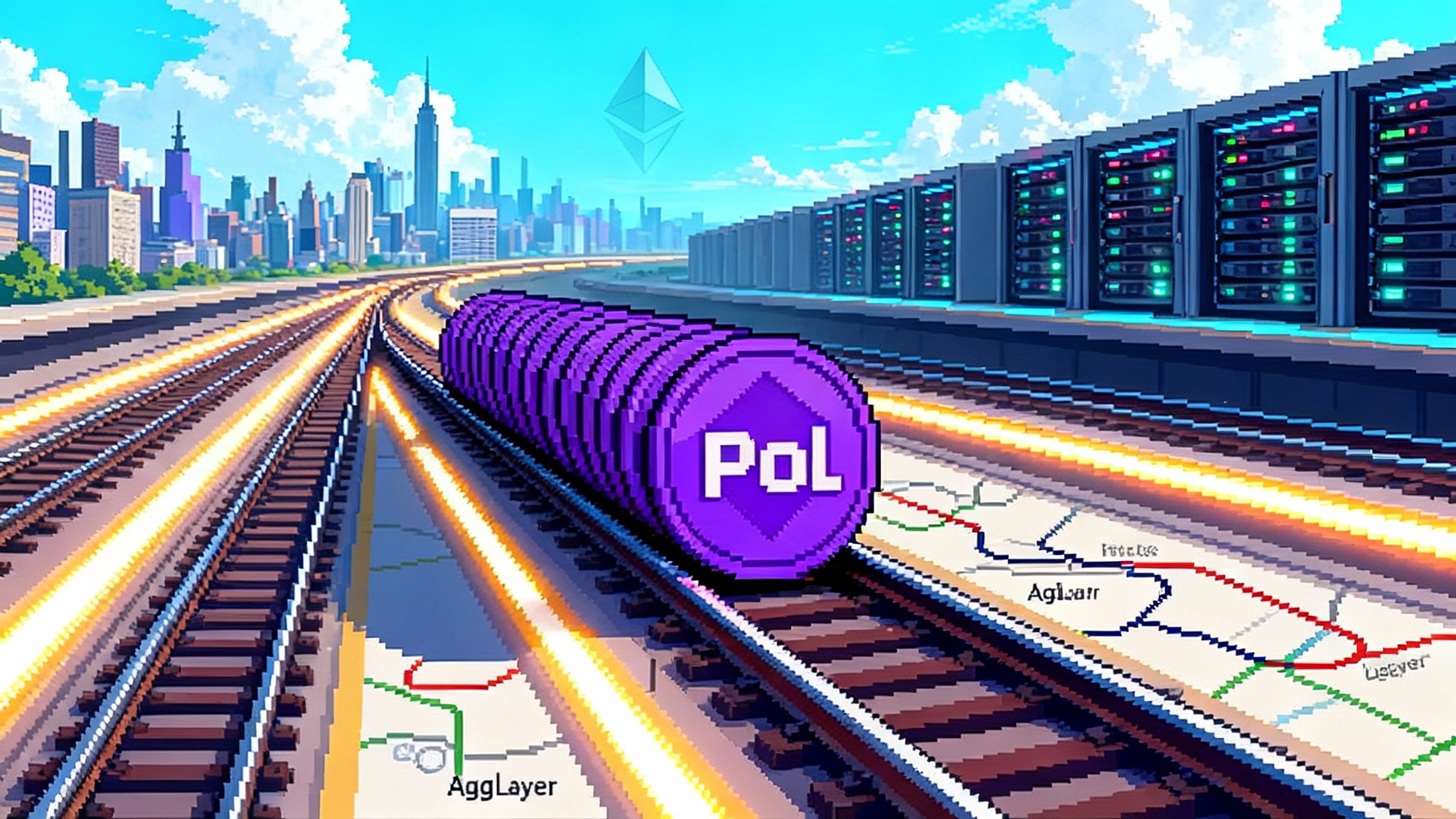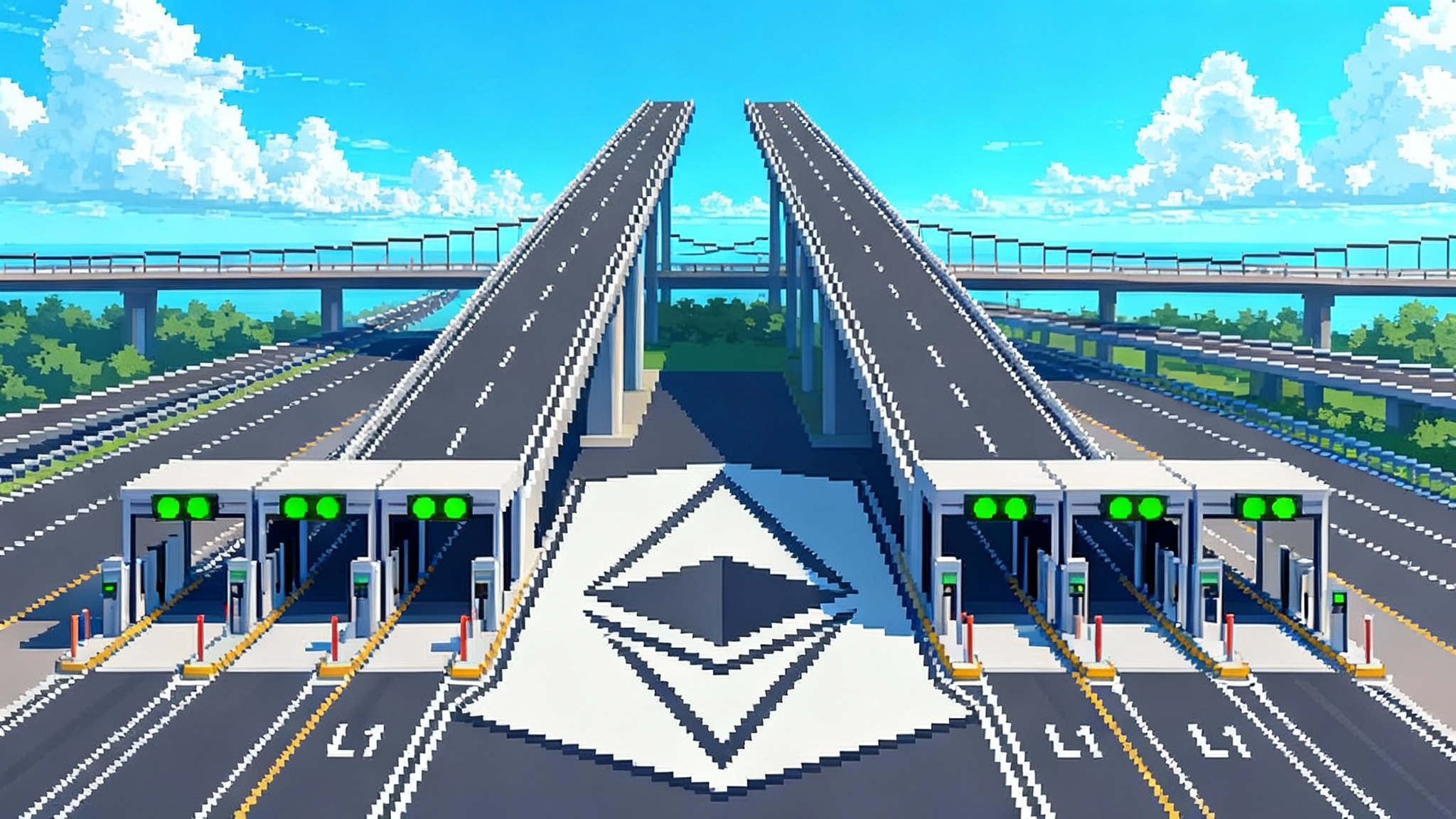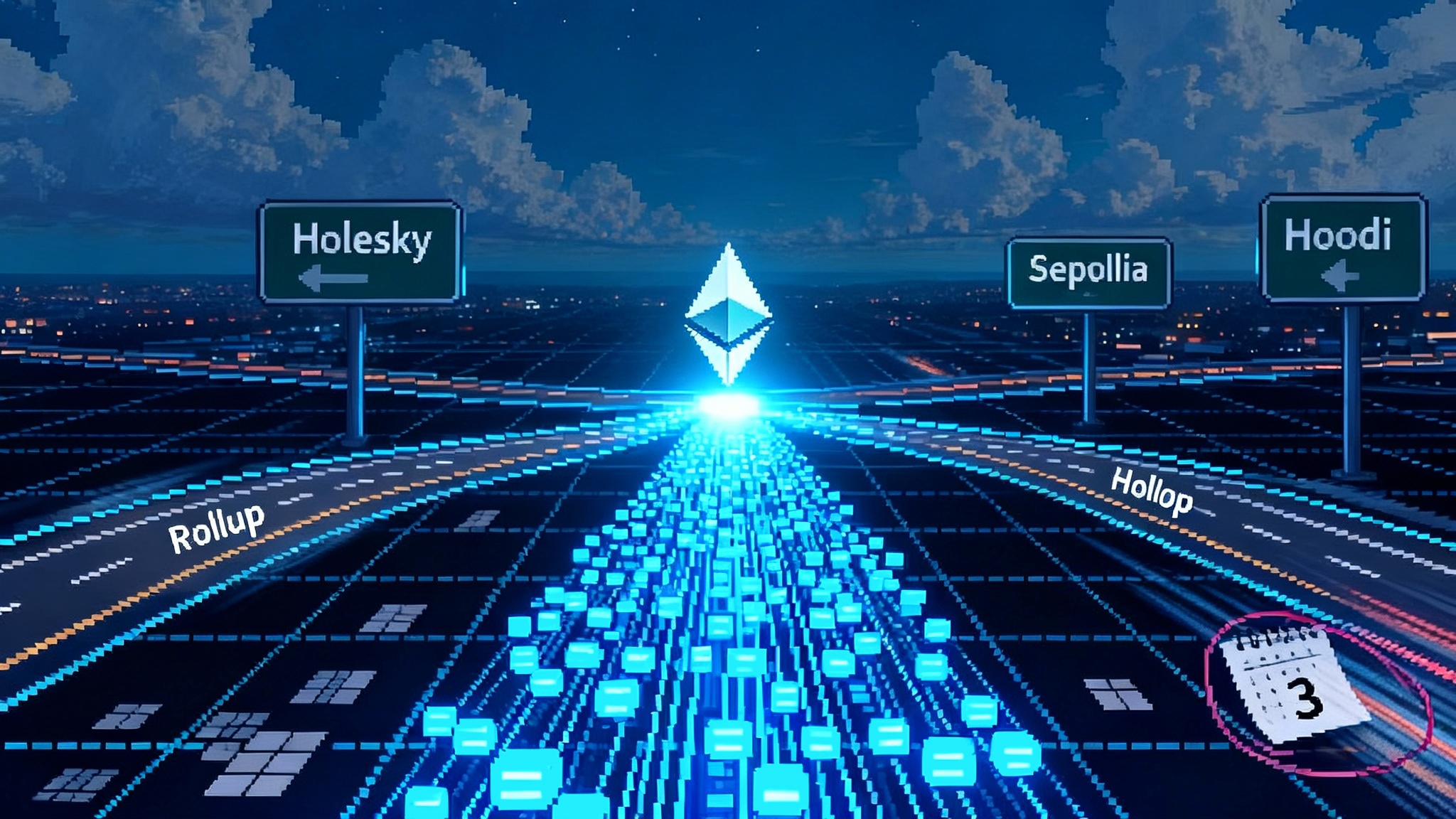Polygon’s POL Switch Is On as Coinbase Auto-Swaps MATIC
From October 14 to 17, Coinbase is auto-converting MATIC to POL, marking Polygon’s switch to Polygon 2.0. Here is why POL is more than a ticker change and what users, builders, and validators should do now.

Breaking week for Polygon 2.0
If you hold MATIC on Coinbase, you are watching the last big lever of Polygon’s migration get pulled in real time. From October 14 to 17, Coinbase is auto-converting custodial MATIC balances and staked positions to POL at a one to one rate, while disabling MATIC sends and receives during the window and shutting MATIC order books permanently on October 14. The new POL markets continue as normal, which makes this a rare, live token migration on a top United States exchange that doubles as a network milestone. For the mechanics and dates, see Coinbase’s announcement with the exact timing and constraints, including the October 7 staking cutoff for new actions. Coinbase details the conversion window.
This is not just a venue housekeeping event. Polygon’s network is already operating with POL as the native token across its ecosystem. As of September 3, 2025, Polygon Labs said the on-network upgrade was 99 percent complete, marking a near total switch from the legacy MATIC era to Polygon 2.0 and its aggregation vision. Polygon Labs reports 99 percent migration. For more on how major venues are accelerating onramps, see our piece on how Samsung and Coinbase flip crypto on.
POL is the spine, not a sticker
Think of POL as the spine that lets Polygon stand up straight as a unified network of chains. MATIC powered a single chain experience. POL is designed to secure many chains at once, coordinate them, and give participants a way to earn for providing that security and coordination. That is why Polygon calls POL a hyperproductive token.
The idea is simple to picture: stake a single pool of POL, then take on multiple jobs across Polygon’s connected chains. Each job pays its own stream of fees or rewards, all against the same staked capital, with risk rules enforced by the protocol.
Why call it the spine? Because it is both staking and governance. Validators post POL as stake, then register for multiple roles, such as producing blocks, generating zero knowledge proofs, or helping with data availability. Governance steers the emissions schedule and upgrades, so the same token holders who secure the network also set its rules. That combination lets Polygon use one incentive engine to power many chains, not one chain at a time.
The AggLayer, explained like a subway map
Polygon’s Aggregation Layer, often called AggLayer, ties the network together so that many chains can feel like one to the user. Today, crypto often works like a city with bus routes that stop short of one another. You ride one bus, get off, buy a separate ticket, wait, then board a second bus. In practice, that means wrapping assets and trusting ad hoc bridges. The AggLayer aims to make transfers feel like a subway line with timed interchanges. You tap once, the system coordinates handoffs between lines behind the scenes, and you arrive without changing your ticket or touching a risky bridge.
There are three concrete promises behind that metaphor:
- Native assets, not wrappers. The AggLayer is built around a single canonical bridge to Ethereum so that tokens remain the original asset as they move between Polygon chains. This cuts out the maze of lookalike wrapped tokens.
- Unified liquidity. With a shared coordination layer, liquidity can be discovered across connected chains, which reduces the tax that market makers and arbitrageurs pay to move inventory around. Fewer duplicated pools means better prices and lower slippage for users.
- Chain sovereignty, shared safety. Chains can still pick their own gas token and app logic, but they inherit the shared security model and cross chain messaging of the AggLayer.
POL is the economic key that makes these promises hold. Stakers are paid to enforce the rules that keep assets native, messages consistent, and settlements verifiable. If they violate the rules, they lose stake. If they perform their roles, they earn multiple revenue streams. For more on maturing exits across L2s, see how BoLD and Base Stage 2 exits changed the user journey.
What changes for liquidity when the wrappers go away
The biggest practical shift is that bridging becomes a routing problem, not an asset transformation. That matters for four groups:
- Users. You spend less time checking whether you hold the real token or a wrapped copy. When you send a stablecoin from a Polygon gaming chain to a Polygon DeFi chain, it is the same asset at both ends. That reduces failed deposits and stuck funds.
- Market makers. You can quote tighter spreads across connected exchanges and apps because inventory is fungible network wide. Capital that was trapped as wrapped IOUs can be put to work where demand is highest.
- Protocol designers. You can design contracts that call across chains with predictable settlement assurances. That unlocks native cross chain lending or intent based trading without bolting on a custom bridge.
- Risk teams. Risk moves from opaque bridge multisigs to a cleaner, protocol enforced security model tied to POL staking. You can price that risk in your policies and know who bears it.
Validator economics, in plain terms
In the MATIC era, a validator’s main revenue was protocol rewards and a share of transaction fees on a single chain. In the POL era, validators become multi role operators:
- Base staking rewards. POL adopts a long term emission schedule governed on chain. The headline figure is a two percent annual issuance after the wind down of older schedules, with allocations that fund validator rewards and a community treasury. The target is steady security spend that is adjustable through governance rather than fixed forever.
- Multi chain fees. If you validate more than one Polygon chain, you collect fees on each. That could include block production fees, proof generation service fees, and other role based payments.
- Chain level incentives. New chains can offer extra rewards, paid in POL or their native token, to attract validators early. That aligns security with growth, similar to how cloud providers credit early adopters to seed usage.
On the cost side, validators should plan for:
- Hardware profiles that match different roles. Generating validity proofs has different compute needs than sequencing transactions. Operators that specialize can win market share on certain roles.
- Performance based selection. If your nodes miss checkpoints or proofs, delegators will move. Rewards are sensitive to uptime and throughput, so operational excellence matters more than sticker stake size.
- Liquidity risk during unbonding. Unbonding windows and notice periods require cash buffers. This is especially important if you restake across multiple chains, since misbehavior or downtime on one role can cascade across your positions.
A realistic path for a mid sized validator looks like this: start with base POL staking on the most active chain, add a second role on a newer chain that offers incentive rewards, then layer in a proof generation service once your infrastructure is tuned. Each step increases revenue streams without requiring new stake capital, but each step also raises operational risk that must be managed with monitoring and redundancy. For context on the economics of ZK services, see how proof markets hit mainnet.
Concrete steps to take this week
Here is a short checklist for each audience as the Coinbase conversion window unfolds.
For everyday users on Coinbase
- Expect a one to one conversion. Custodial MATIC and staked MATIC convert to POL automatically between October 14 and 17. During this period, MATIC transfers are paused and MATIC order books are shut, while POL trading continues.
- If you want to opt out, move before the window. To manage the swap yourself, withdraw MATIC to self custody before October 14, then use Polygon’s portal tools after the window to migrate when you choose.
- After conversion, update watchlists. Replace MATIC tickers with POL in your portfolio and alerts to avoid confusion about price moves.
For self custody users
- Verify token addresses, not just tickers. In interfaces that still show both, confirm the contract you interact with is the official POL contract. Avoid sending to old MATIC contracts unless you are intentionally using a migration tool that clearly states it supports unmigration.
- Refresh token lists and wallets. Some wallets cache symbols. Force a resync so that balances display under POL, not MATIC.
For builders and teams
- Update constants and symbols across code, analytics, and docs. Change MATIC references to POL for payments, fees, and staking. Update front ends so that users do not see mixed symbols.
- Review bridge flows. Where your app once minted wrapped tokens for cross chain moves, plan to use AggLayer messaging or standardized bridges that preserve native assets. The end goal is no wrapped duplicate of a token your users deposit.
- Recheck emissions and incentive math. If your protocol paid incentives in MATIC or assumed a zero issuance schedule, update models to POL’s emissions and any treasury programs you plan to join. Align program budgets to the new token’s economics.
For validators and infrastructure providers
- Map your role mix. Identify which roles you can profitably support today, such as block production, proof generation, or data availability, then draft a roadmap for adding roles as your capacity grows.
- Build cross chain monitoring. Set alerts per chain and per role, not just per node. Treat proof generation queues and sequencer latency as first class metrics.
- Publish a client upgrade plan to delegators. Explain what changes with POL, how you will manage unbonding risk, and how your commission will evolve as you add roles. Clear communication can attract more delegated POL.
Why this accelerates L2 brand migrations
Polygon’s move is part of a wider pattern. Networks are turning from single chain projects into ecosystems with many chains under one brand and a common economic token. Optimism’s Superchain has multiple chains that share the OP Stack and the OP token for governance and incentives. Arbitrum Orbit extends the Arbitrum stack across app chains under the ARB brand. Avalanche uses AVAX to secure subnets. Cosmos has Interchain Security and the Atom Economic Zone. What was once an exception is becoming the default. Builders want the freedom of their own chain and the liquidity of a shared network. Users want one mental model and one wallet flow.
POL formalizes that model for Polygon. A single token secures many chains, a single coordination layer moves assets natively, and a single brand reduces user friction. Coinbase’s conversion will shift one of the last large pools of MATIC into POL, which removes lingering fragmentation in liquidity and messaging. That makes it easier for projects to commit to Polygon 2.0 without hedging around ticker confusion.
Expect this to ripple outward in three ways:
- Token level consolidation. More ecosystems will align around a single token that pays for security across many chains, plus a treasury that funds public goods at the brand level, not the chain level.
- Exchange policy changes. Centralized venues will set playbooks for how to delist legacy tickers and support on chain upgrades with minimal downtime. The Coinbase window is likely to become the template other exchanges reuse.
- App chain incentives. Chain teams will compete by offering targeted roles and rewards to POL validators. That will push specialized operator markets to emerge, similar to how cloud providers built entire partner ecosystems around compute and storage specialties.
A quick reality check on risks
- Execution risk. Any upgrade that touches staking, bridges, and exchange order books in the same week needs careful coordination. Watch for temporary liquidity gaps as pairs are migrated and for support queues to spike. Plan for delays rather than assuming everything clears on the first day.
- Governance drift. A two percent annual issuance is modest, but it is still issuance. Projects that modeled emissions as zero need to revise. Token holders should read proposals, not just vote by reflex. The promise of shared security depends on credible, transparent governance.
- Role concentration. If a small set of operators capture proof generation or sequencing roles across many chains, the system inherits correlated risk. Protocol design and community oversight should encourage diversity in roles and clients.
The bottom line
This week’s conversion is the public switch flip. MATIC gives way to POL, Coinbase executes its auto migration, and Polygon 2.0 steps fully into view. The upgrade is bigger than a new ticker. POL is the staking and governance spine for a unified Polygon, and the AggLayer is the transit system that makes the whole network feel like one chain while keeping assets native. For users, the next step is simple. Verify your balances, update your tickers, and move on. For builders and validators, the work starts now. Design for a world where liquidity is unified, roles are specialized, and your economic assumptions are tuned to POL’s incentives. That is how you capture the upside of Polygon’s next chapter without inheriting yesterday’s complexity.








